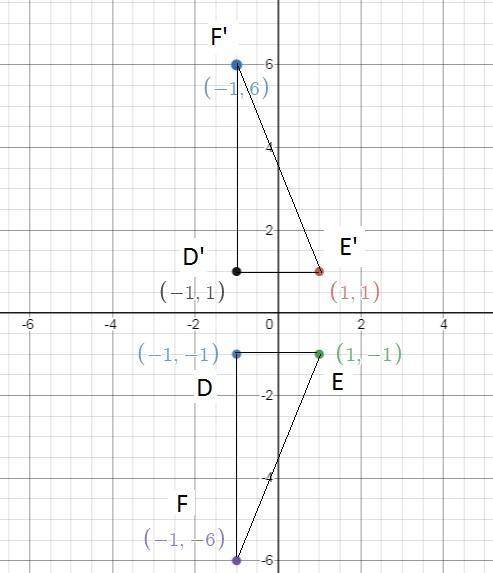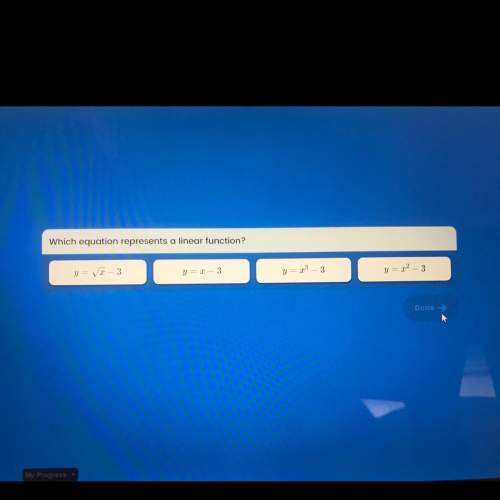
Mathematics, 29.01.2020 00:56 danidavis2002
△def is reflected to form △d′e′f′ . the vertices of △def are d(−1,−1) , e′(1,−1) , and f(−1,−6) . the vertices of △p′q′r′ are d′(−1,1) , e′(1,1) , and f′(−1,6) . which reflection results in the transformation of△defto△d′e′f′ ? reflection across the x-axis reflection across the y-axis reflection across y = x reflection across y=−x

Answers: 3


Another question on Mathematics



Mathematics, 21.06.2019 19:50
Examine the two-step equation. − 7 4 + x 4 = 2 which property of operations allows you to add the same constant term to both sides? amultiplication property of equality bdivision property of equality caddition property of equality dsubtraction property of equality
Answers: 2

Mathematics, 21.06.2019 21:30
Complete each statement from the information given and the triangle criterion you used. if the triangles cannot be shown to be congruent, leave the box for the second triangle blank and choose for reason “cannot be determined.” carbon - regular hexagon. ∆can ≅ ∆ by
Answers: 1
You know the right answer?
△def is reflected to form △d′e′f′ . the vertices of △def are d(−1,−1) , e′(1,−1) , and f(−...
Questions


Mathematics, 04.07.2019 13:30


History, 04.07.2019 13:30



History, 04.07.2019 13:30


Biology, 04.07.2019 13:30

Social Studies, 04.07.2019 13:30

Health, 04.07.2019 13:30





History, 04.07.2019 13:30

Mathematics, 04.07.2019 13:30



Mathematics, 04.07.2019 13:30









